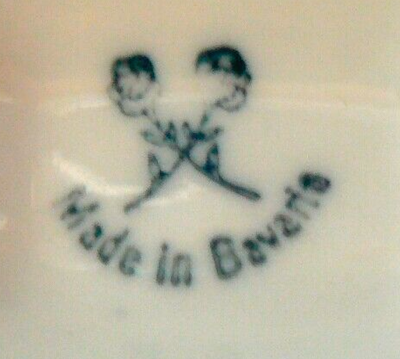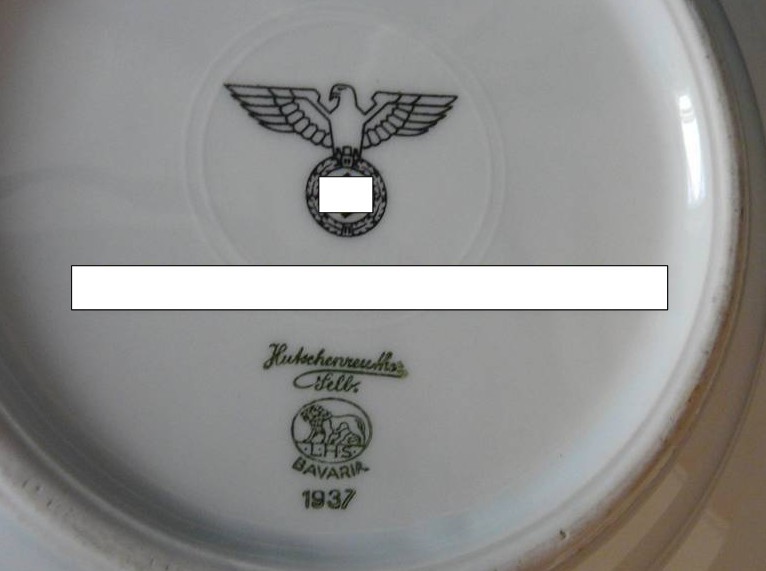Underglaze decorations

Underglaze decorations are porcelain finishes that are applied to the biscuit-hard body before glaze firing (glost firing). Once the decoration has been applied, the body and decoration are glazed together and then fired.
Porcelain experts describe underglaze decoration as the fine art of porcelain finishing, because not only are the colours required for this very expensive, but the decorators' and porcelain painters' craftsmanship must also be highly developed. Historically, underglaze decoration is closely linked to the (further) development of European porcelain. Originally, this type of porcelain decoration was only used to mark the origin of a piece of porcelain, i.e. to imprint a brand label on the product.
It was not until long after Böttger & Tschirnhaus that the typical underglaze decorations "onion pattern" and "Indian blue" were created in Germany by hand painting. Under Wedgewood, the British also succeeded in applying the well-known "wild motifs" to a porcelain-like stoneware body using the underglaze process.
As mentioned, the body and decorative colours are fired together in the underglaze process. This means that the decorative colours have to withstand a temperature range of more than 1,300 °C. At this heat, natural colours of biological or animal origin burn completely. Colours and additives of mineral or metallic origin are required. At the beginning of the 17th century, only three colours were available for underglaze finishing.
- green - obtained from chromium oxide
- blue - obtained from cobalt oxide
- brown - obtained from copper oxide
The composition and purity of the metallic colours then determined the degree of "bleeding", i.e. the extent to which a colour expands (washes out) between the body and glaze and loses intensity in the process. Our picture above shows a chrome oxide base mark with the inscription "Made in Bavaria" together with crossed flowers (roses). It is therefore almost certainly a decoration from the house of Philipp Rosenthal (I), at least the spiritual father of the "Classic Rose" collection, which his son Philip (II) was only able to realise a few decades later.
The "Merchandise Marks Act 1887", which was passed by the British on 23 August 1887, forced German products to be labelled "Made in Germany". Accordingly, the floor mark is not older than 1890, because in that year Prince Regent Luitpold of Bavaria decided to use "Bavaria" to distinguish himself from "Germany". After the expropriation of the Rosenthal family in 1941, the Rosenthal factory was granted special authorisation to continue the brand name, but the NSDAP propaganda minister - Joseph Goebbels - urgently wanted a purely Aryan brand. Rosenthal therefore also produced Wehrmacht crockery and other floor brands. The bleeding of the chromium oxide indicates a low purity content, which points to a period after 1942 in which the allocation of raw materials almost exclusively benefited the armaments industry. In 1950, Philip Rosenthal II took back the family's property and began to build up the premium Rosenthal brand. Accordingly, the bottom stamp dates from the period between 1942 and 1945. To our knowledge, no other manufactory used a signet with crossed flowers.

The underglaze mark is reserved for the actual porcelain manufacturers, as it makes further or later labelling impossible. Our second picture shows very clearly that the Third Reich really ran out of "petrol" and cobalt around 1942, because towards the end of the war, only "cheap" overglaze marks were fired on existing porcelain. Underglaze marks are difficult to cover with new, different marks. These are then referred to as ground covers.
It is mainly reserved for the actual manufacturers because the II. and III. choice also carry the floor mark. In other words, the customer would have to sort and recycle the rejects himself. However, no one other than the manufacturer can and wants to afford this luxury.
